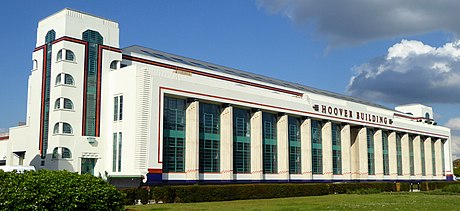
British industrial architecture has been created, mainly from 1700 onwards, to house industries of many kinds in Britain, home of the Industrial Revolution in this period. Both the new industrial technologies and industrial architecture soon spread worldwide. As such, the architecture of surviving industrial buildings records part of the history of the modern world.
Some industries were immediately recognisable by the functional shapes of their buildings, as with glass cones and the bottle kilns of potteries. The transport industry was supported first by the growth of a network of canals, then of a network of railways, contributing landmark structures such as the Pontcysyllte Aqueduct and the Ribblehead Viaduct.
New materials made available in large quantities by the newly-developed industries enabled novel types of construction, including reinforced concrete and steel. Industrial architects freely explored a variety of styles for their buildings, from Egyptian Revival to medieval castle, English country house to Venetian Gothic. Others sought to impress with scale, such as with tall chimneys as at the India Mill, Darwen. Some directly celebrated the modern, as with the "heroic"[2] Power House, Chiswick, complete with statues of "Electricity" and "Locomotion". In the 20th century, long white "By-pass modern" company headquarters such as the Art Deco Hoover Building were conspicuously placed beside major roads out of London.
- ^ Pragnell 2021, p. 227.
- ^ Cherry & Pevsner 1991, p. 405.
© MMXXIII Rich X Search. We shall prevail. All rights reserved. Rich X Search
